West Lavington Manor: The gardens four centuries in the making
Originally laid out in the 1630s, the garden at West Lavington Manor in Wiltshire is today the home of Mr and Mrs Andrew Doman. And in its latest iteration, says Charles Quest-Ritson, has found a perfect balance between planting and design. Photographs by Jason Ingram.
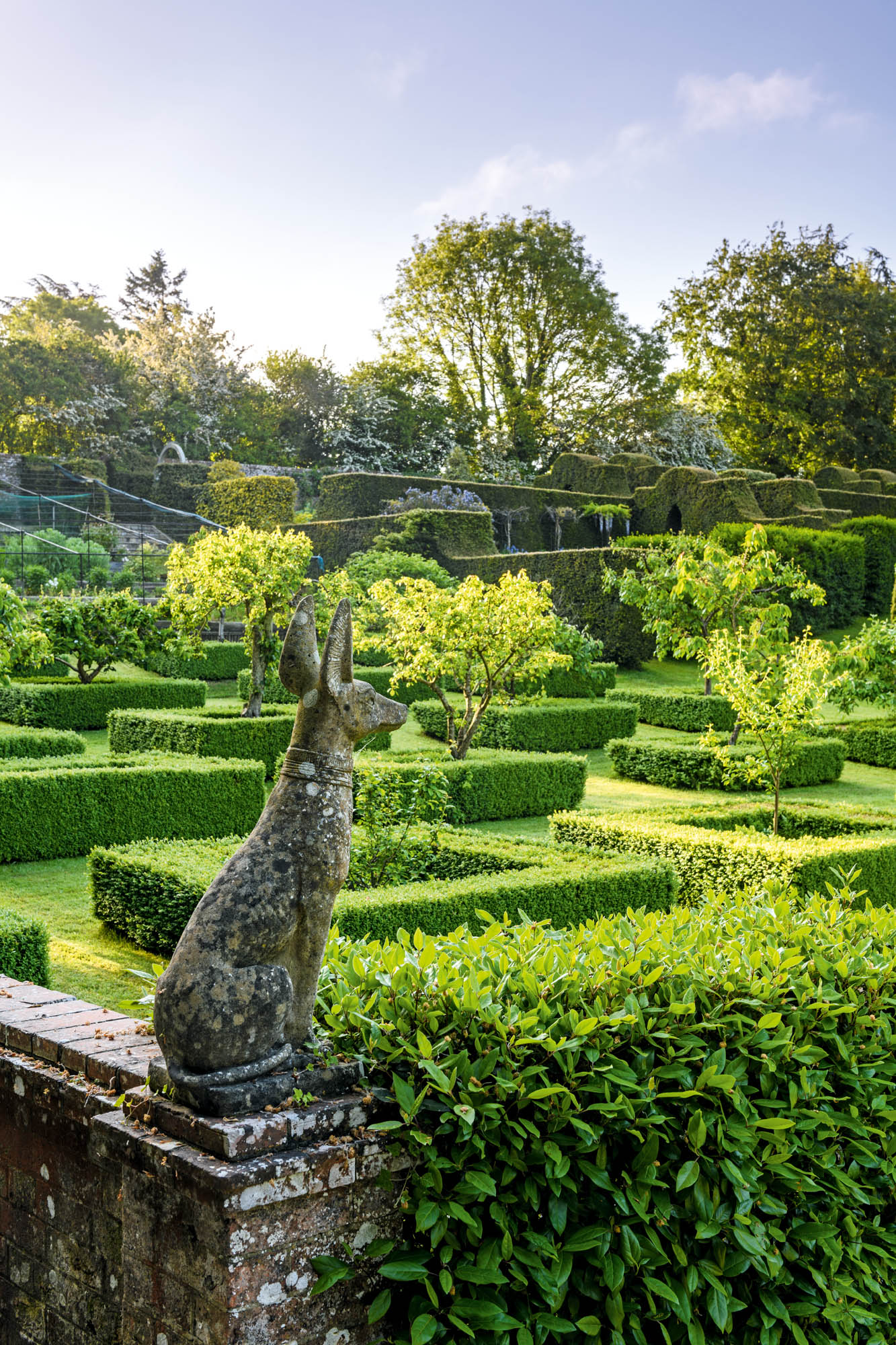

There has been a garden at West Lavington Manor in Wiltshire for at least 400 years. John Aubrey visited it late in the 17th century. He particularly remembered that ‘through the length of it there runneth a fine cleare trowt stream; walled with brick on each side, to hinder the earth from mouldring down.’ That stream still flows through the garden, channelled between its old brick walls.
Aubrey also recalled that the garden had originally been laid out in the 1630s by Sir John Danvers, ‘who first taught us the way of Italian gardens’. Danvers, he wrote, ‘had well travelled France and Italy and made good observations… He had a very fine fancy, which lay chiefly for gardens and architecture.’ Danvers’s Italianate garden has, of course, long since disappeared. In fact, there is a long pause in what we know of the garden until 1905 when the then owner, the 1st Viscount Churchill, sold his West Lavington estate to Henry Thomas Holloway. Holloway’s father was a small builder in the village who had moved to London and flourished; among the Holloway Brothers’ largest building contracts were the Old Bailey Law Courts and, later on, Chelsea Bridge.
West Lavington is an ancient village — it gets a mention in the Domesday Book — at the foot of the northern escarpment of Salisbury Plain. The main road from Devizes to Salisbury runs through the middle, close to the manor house itself. The garden extends to about five acres, the whole enclosed by 16th-century walls. The soil is greensand over clay and very fertile. Holloway altered and extended the house in the Edwardian West Country style much beloved by Avray Tipping, Country Life’s then Architectural Editor.
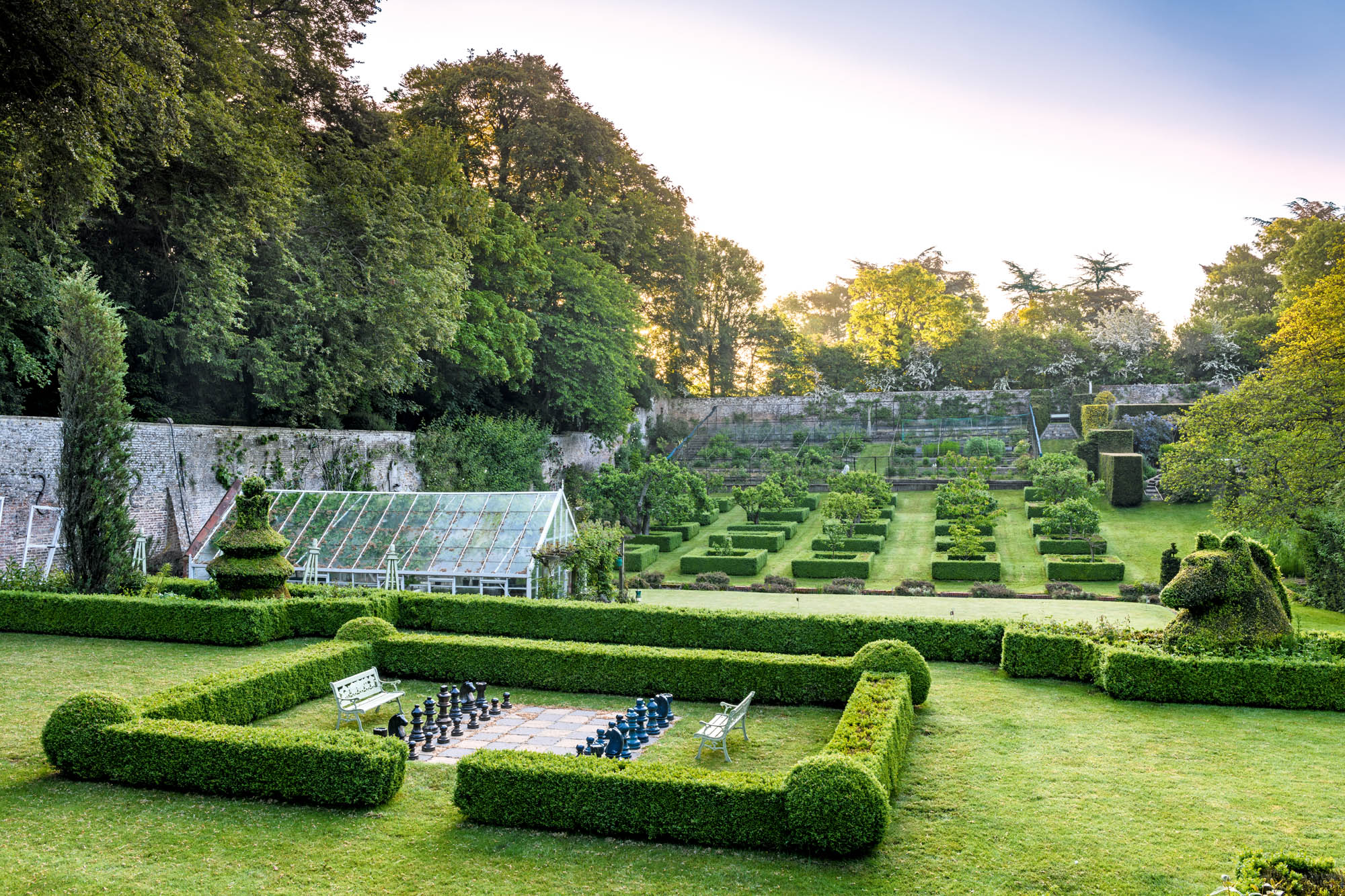
New owners bring new ideas to gardens, and subsequent changes of ownership mean that, apart from some handsome cedars, few of Holloway’s plantings remain today. However, the handsome plants of lemon-scented Magnolia grandiflora ‘Goliath’ on either side of the main entrance to the house probably date from his early years as owner.
The plantings have developed apace since Andrew Doman bought West Lavington in 2007. Mr Doman is passionately interested in garden design and plants and has transformed what he inherited into one of the most beautiful, balanced and stimulating gardens made in the past 20 years. Every corner has been restored or improved with intelligence and discrimination.
A good example of Mr Doman’s thinking is his treatment of the double herbaceous borders that run along the edge of the garden above the village street. These have recently been replanted from end to end with plants that provide structure and extend the season of flower. One way he has achieved this is by repeating conspicuous plants or combinations at intervals all along. When, eventually, you reach the end of the herbaceous borders — passing along the way some ancient box plants revivified by cloud pruning — you find yourself in a Japanese garden, a transition that works surprisingly well.
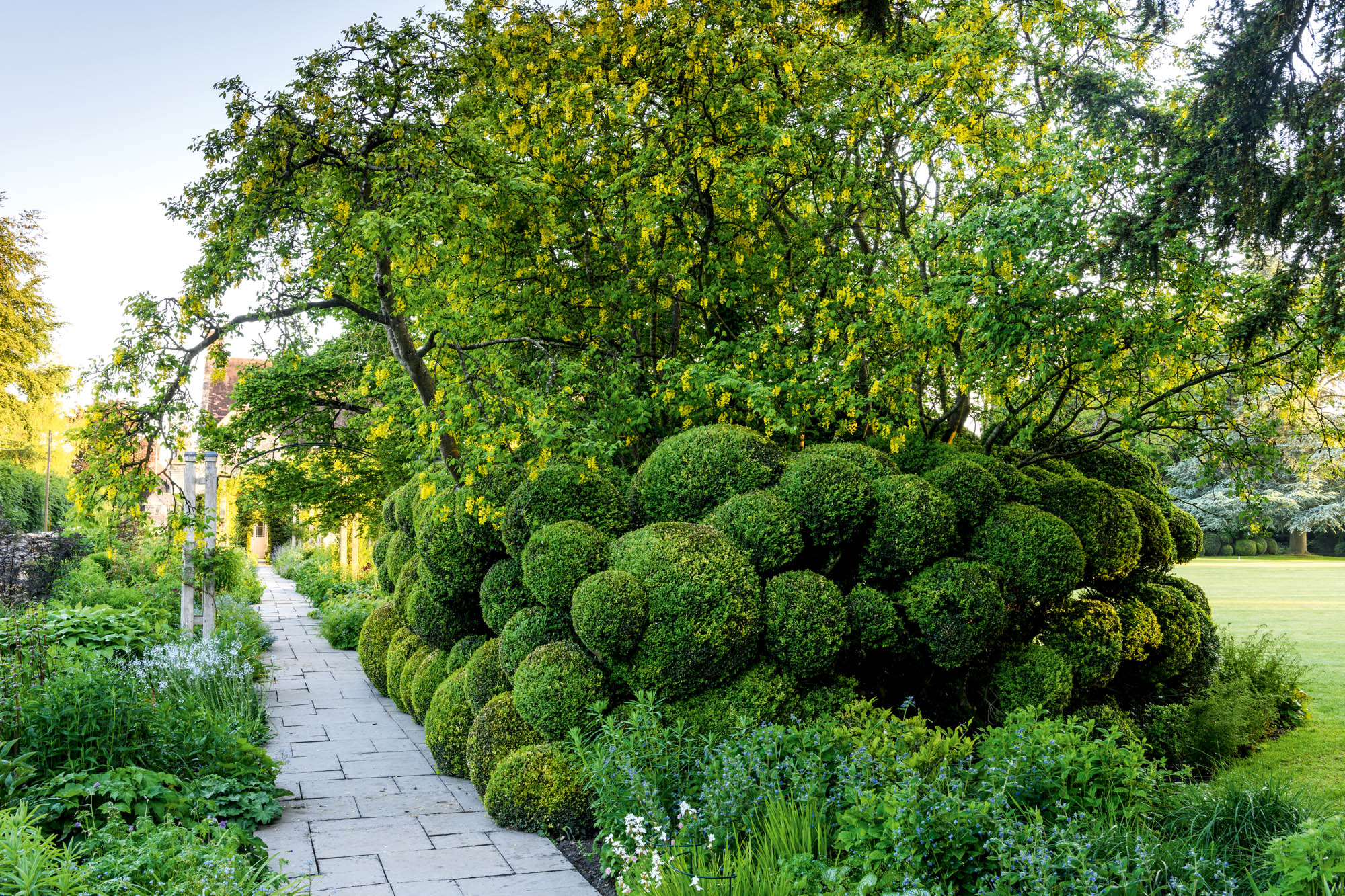
Mr Doman loves Japan and Japanese gardens. Wherever he travels, all over the world, he seeks out Japanese gardens, whether good or not-so-good, to visit and from which to learn. Under the guidance of Roderick Griffin — whose talents have continued to involve him in the design and development of the garden as a whole — and Japanese expert Andrew Johnstone, Mr Doman’s team of designers and contractors spent an entire week at West Lavington working on a short section of running water to ensure that its twists and ripples created the right musical harmonies required by Japanese precepts. The boulders were sourced from a collector in Wales, but the Japanese maple at the centre was already in place so that, in effect, the new garden takes advantage of the tree’s maturity to suggest that the whole design has been in place for many years.
Exquisite houses, the beauty of Nature, and how to get the most from your life, straight to your inbox.
The trout stream that so delighted Aubrey was flooded about 100 years ago at the western end to create a small lake. This is fringed by gunnera and water irises, with an elegant, mansarded duck house at the centre and a promontory of wooden boarding on which to sit and listen to the insects and birds that give life to the water. All is in scale: the lake fills a dip in the contours and the surrounding plantings close it from the rest of the valley and yet the stream is clearly seen to enter, join the waters of the lake and then continue again along its bricked embankment. It is augmented along its way by small springs within the garden. Trees that benefit from the presence of water include the cut-leaved alder Alnus glutinosa ‘Laciniata’, the weeping willow Salix x sepulcralis var. chrysocoma and several fine specimens of the dawn redwood Metasequoia glyptostroboides. The bright stems of pollarded S. alba var. vitellina ‘Britzensis’ are especially striking in the winter sun.
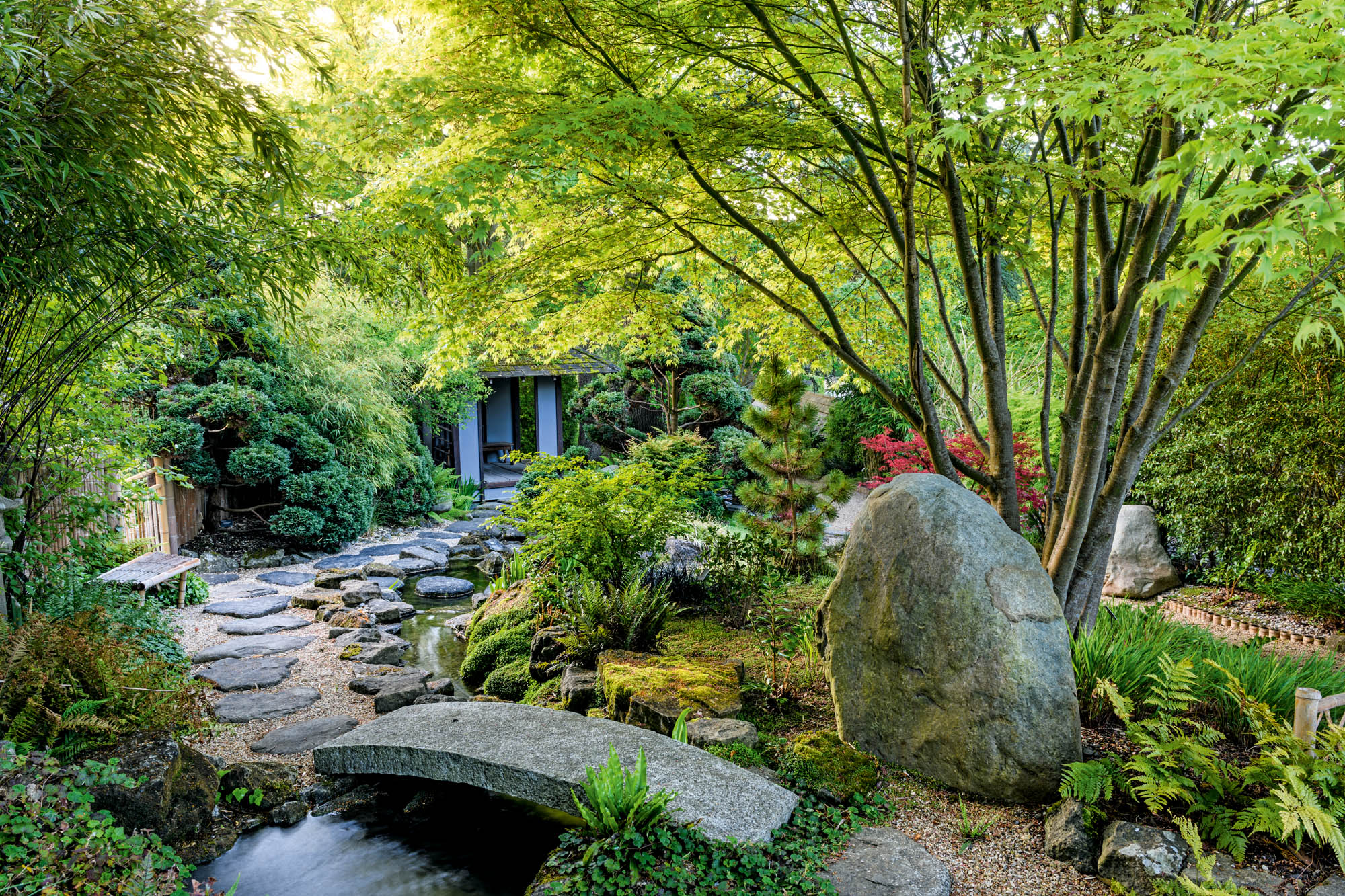
Beyond the lake lies a small plantation of Betula utilis subsp. jacquemontii, Himalayan birch trees with brilliant white trunks, underplanted with camassias and the bright-blue comfrey Symphytum caucasicum. The path then rises to the most southerly part of the garden, presided over by a bust of Apollo. The brick boundary wall protects fruit trees and climbing roses, with a grass path running along its entire length that passes through gardens planted in different colours. Here, too, are rows of the vines ‘Chenin Blanc’ and ‘Madeleine Angevine’, the grapes of which have flourished in the hot summers of recent years and ripen well enough to make wine-making possible.
The long path along this southern boundary is known as Danvers Walk and is planted with fruit trees, shrub roses and agapanthus. Here, and throughout the garden, spaces are defined by yew hedges and a great number of elegant, tall, thin pyramids, also of neatly clipped yew. A large fruit cage and cutting garden are devoted to fruit and flowers for the house and on the slopes leading back down to the stream stand some 25 well-trained fruit trees — apples, pears and quince — each surrounded by a grid of low, clipped box that rises from the mown grass.
One of the great strengths of the garden is the handsome expanse of flat, neatly mown lawn that anchors the house and shows off its architecture. If you walk away, towards the far edge of the lawn, where the broad valley down towards the stream begins, you encounter a beautiful rose garden, set below the level of the lawn. It has a formal structure, with stone paving, wooden mooring posts, hooped arches draped with white climbing roses and a pretty, circular pool at the centre. Most of the roses are of the old-new sort, such as Pemberton Hybrid Musks, English Miss from Cants of Colchester and dark-pink Tess of the d’Urbervilles from David Austin.
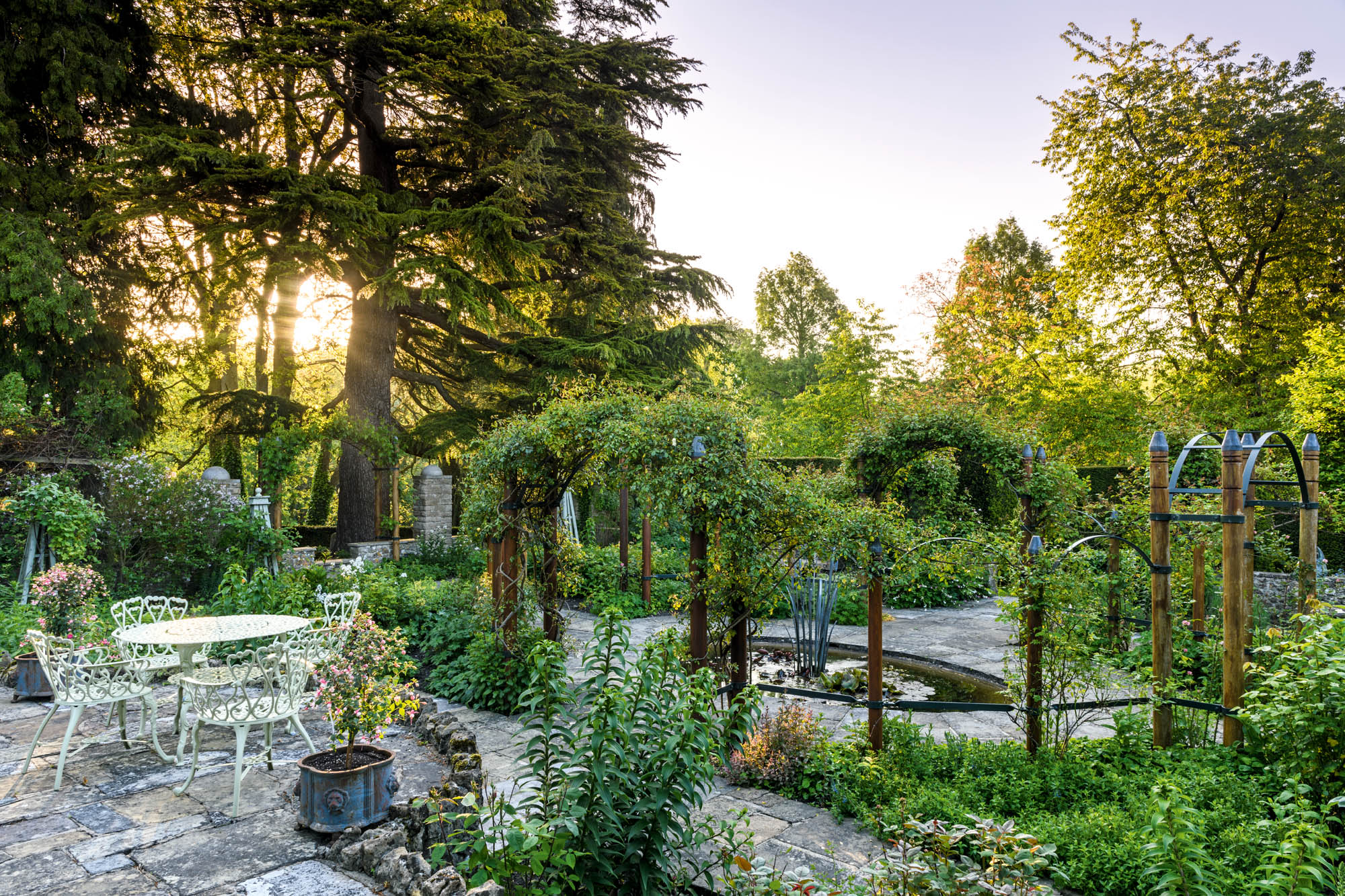
Mr Doman has asked David Stone, for many years head gardener for the National Trust’s Heritage Rose collection at Mottisfont Abbey in Hampshire, to help with the development and management of his rose garden. The underplantings of white foxgloves, Sisyrinchium striatum, peonies and lavender are well chosen — unfussy, but effective foils to the beauty of the roses.
Spring-flowering cherries and larger ornamental trees cover the slopes. Walnuts and a variegated tulip tree are underplanted with snowdrops, daffodils and bluebells. A small topiary garden displays many different shapes, with some of the once-elegant birds now developing into stouter chickens.
Immediately above the stream is a spacious Edwardian vinery. ‘Black Hamburgh’ is the oldest vine here, but the building also doubles up as a conservatory in which to sit and shelter from the cold winds of early spring. An arcade of climbing roses surrounds it and the garden walls on either side of the vinery are likewise richly planted with climbing roses, ancient and modern.
Quite apart from its distinguished history, West Lavington is an exceptional garden, worthy of careful study. Its structures and perspectives create a sense of spaciousness, so its exploration is a pleasure at all seasons, even in the depths of winter. Mr Doman insists upon displays of flowers in every month of the year and the plants and plantings bear witness to sharp eyes and excellent taste. The standard of upkeep is very high; it is hard to believe the garden is maintained by only one full-time gardener with no more than rather part-time help from the Doman family.
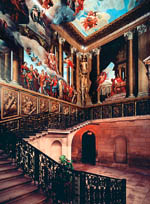
Great British architects: William Talman (1650-1719)
William Talman was England's most distinguished architect of the country house during the 17th century
Charles Quest-Ritson is a historian and writer about plants and gardens. His books include The English Garden: A Social History; Gardens of Europe; and Ninfa: The Most Romantic Garden in the World. He is a great enthusiast for roses — he wrote the RHS Encyclopedia of Roses jointly with his wife Brigid and spent five years writing his definitive Climbing Roses of the World (descriptions of 1,6oo varieties!). Food is another passion: he was the first Englishman to qualify as an olive oil taster in accordance with EU norms. He has lectured in five languages and in all six continents except Antarctica, where he missed his chance when his son-in-law was Governor of the Falkland Islands.
-
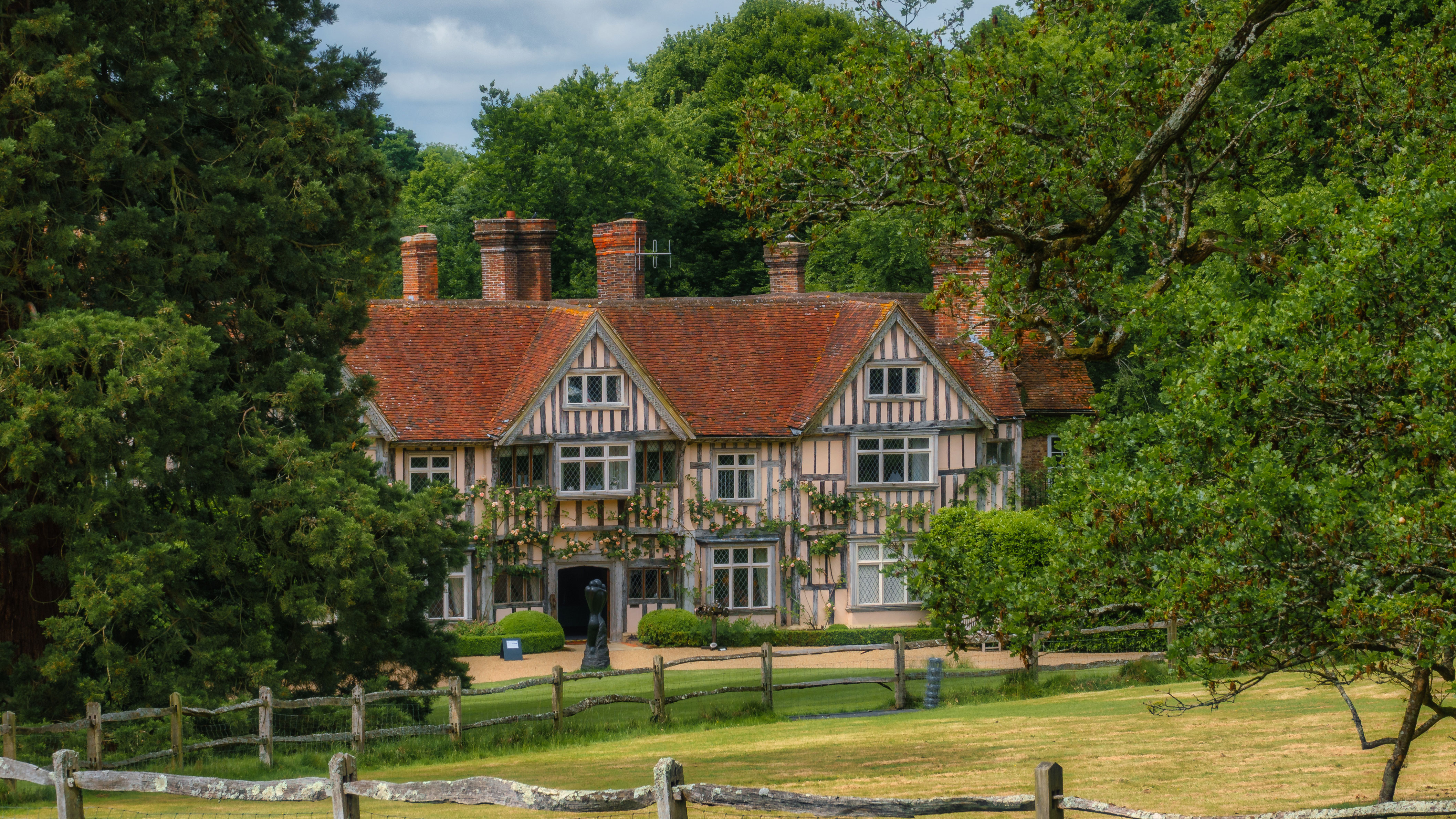 'Good news, let’s make the £20 million deal happen': The Mansion Tax that turned out to be 'the least worst outcome for prime property', and the places that will be hit
'Good news, let’s make the £20 million deal happen': The Mansion Tax that turned out to be 'the least worst outcome for prime property', and the places that will be hitWhere in Britain are the £2 million homes set to be hit by the Mansion Tax? Anna White takes a look.
-
 A very taxing quiz indeed: Country Life Quiz of the Day, November 26, 2025
A very taxing quiz indeed: Country Life Quiz of the Day, November 26, 2025Test your general knowledge in today's Quiz of the Day.
